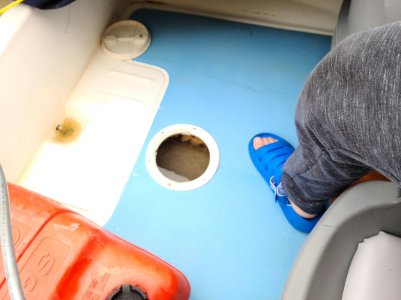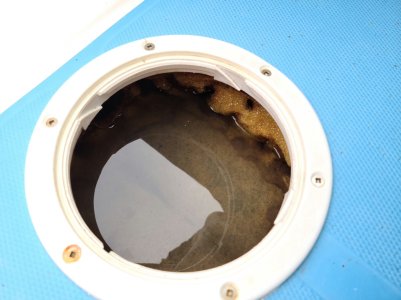Years ago, I bought a similar ( not nearly as pretty) 16' boat with water saturated foam between the hull and deck. It likely added an extra 2 - 300 pounds of weight. I decided to see what was under the rub rail - rivets. Screws would have been easier. I drilled them out. Not surprisingly, with a bit of carefully prying, the old caulking gave up easily - something cheap and nasty.
Leaving the hull strapped on the trailer, me and three husky neighbour's were able to separate the deck and then walk it off the hull. The foam had not really stuck to the deck. Now, suit up! That old foam is dirty, itchy stuff. What a mess! It came out in little, crumbly chunks, kind of like that sea foam candy. After many hours I had scraped out several heavy garbage bags full of it.
After vacuuming out the remnants, I stacked blue foam board to fill in the void between the hull and deck. It was not fine work, in fact pretty rough. I stacked it up loose to be a little lower than the space available. This boat had two long, tubular glass "stringers", the keel and a plywood transom stuck to the hull, with some rot to repair. No built-in tank - too shallow, but some wiring for nav. lights.
My neighbours helped dry fit the deck. It was actually pretty good on the first attempt. We took it off, once more. Then we sprayed the blue board and transom with about five cans of foam and quickly put the deck back on. The neighbours sat inside as ballast, drinking beer. I went around and piloted some holes, then put a few s/s screws through the joint to temporarily hold things together. The next day, I caulked the joint from below with Sikaflex and put more screws in, then the rub rail went back on.
It was a big, ugly job. I had that boat for four more years and it was great. Any water could now find its way to the transom plug. It was lighter so we could plane with three guys aboard. It was a cheap way to get a decent fishing boat.




